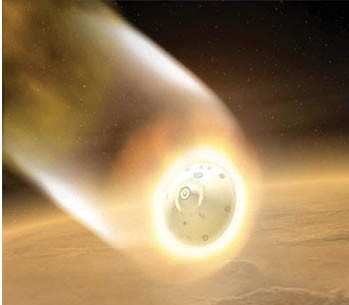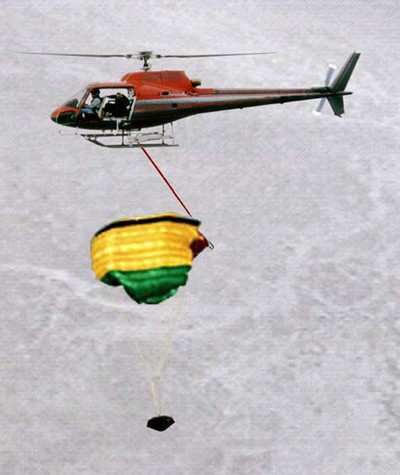Capturing A Piece Of The Sun
NASA's Genesis spacecraft crossed the orbit of the Moon early
Monday, on its way to the mission's dramatic finale over the skies
of west-central Utah Wednesday. Genesis, bringing back samples of
the solar wind, is NASA's first sample return mission since Apollo
17 returned the last of America's lunar samples to Earth in
December 1972.

An important milestone in the mission was met Monday morning,
when the Genesis spacecraft performed its final trajectory maneuver
before capsule release and the dramatic midair capture over Utah.
The spacecraft passed the Earth-Moon orbit at about 2 a.m. Pacific
Time on Monday, traveling at about 1.25 kilometers per second
(2,700 miles per hour).
"Our Deep Space Network is allowing us to keep a close eye on
our spacecraft and its samples of the Sun," said Genesis project
manager Don Sweetnam of NASA's Jet Propulsion Laboratory in
Pasadena (CA). "It is right where we planned it to be. Everything
is go. The navigators and engineers here at JPL are go, and the
recovery team out in Utah is go, too."
The Genesis recovery team members, both ground support and the
flight crews who will make the dramatic midair capture, have been
undergoing flight training since arriving at the US Army Dugway
Proving Grounds, Utah, on Aug. 23.
"We came here with a specific set of mission goals that had to
be met before Sept. 8, and those have all been met or exceeded,"
said Genesis director of flight operations Roy Haggard of Vertigo
Inc., Lake Elsinore, Calif. "The next time these two helicopters
take to the sky one of them will be landing with a spacecraft
hooked to its belly."

The Genesis sample return capsule will enter Earth's atmosphere
at 0855 Pacific Time over Oregon. Two minutes and one time zone
later, the capsule will deploy its drogue parachute at 33
kilometers (108,000 feet) over the vast alkali flats and sagebrush
of the US Air Force's Utah Test and Training Range. Waiting 29.5
kilometers (97,000 feet) below will be two helicopters and crew
bearing the space-age equivalent of a fisherman's rod-and-reel,
ready to catch some Sun.
"From the time the drogue deploys it will take about 18 minutes
for the capsule to reach a height where we can get to it," said
Genesis prime pilot Cliff Fleming of South Coast Helicopters, Santa
Ana (CA). "When we are up there that may feel like a long 18
minutes but we have been training for this moment since 1999, so in
the grand scheme of things another quarter-hour or so shouldn't
matter much."
The Genesis mission was launched in August 2001 on a journey to
capture samples from the storehouse of 99 percent of all the
material in our solar system -- the Sun. The samples of solar wind
particles, collected on ultra-pure wafers of gold, sapphire,
silicon and diamond, will be returned for analysis by Earth-bound
scientists. The samples Genesis provides will supply scientists
with vital information on the composition of the Sun, and will shed
light on the origins of our solar system.
 ANN's Daily Aero-Term (04.28.24): Airport Marking Aids
ANN's Daily Aero-Term (04.28.24): Airport Marking Aids Aero-News: Quote of the Day (04.28.24)
Aero-News: Quote of the Day (04.28.24) ANN's Daily Aero-Linx (04.28.24)
ANN's Daily Aero-Linx (04.28.24) Aero-News: Quote of the Day (04.29.24)
Aero-News: Quote of the Day (04.29.24) ANN's Daily Aero-Linx (04.29.24)
ANN's Daily Aero-Linx (04.29.24)




